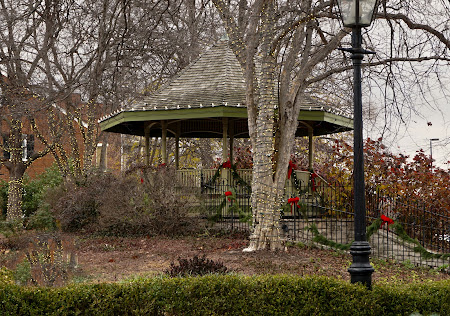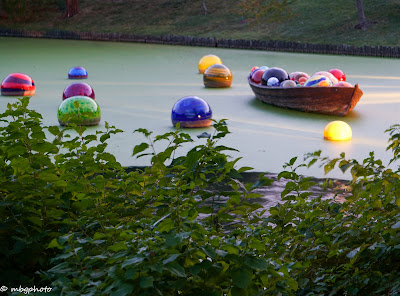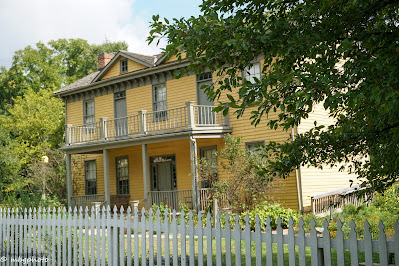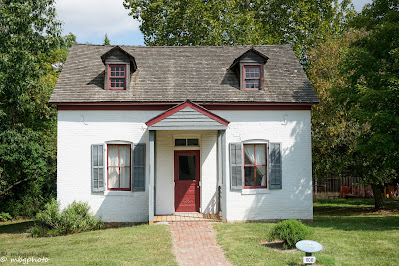Thursday, September 12, 2024
Book Review - Spark of Revolution
Thursday, August 22, 2024
Review of Fun Facts about Sunflowers
Fun Facts about Sunflowers
- Young sunflowers track the sun from sunrise to sunset. This is called heliotropism. Once the flowers are mature they all face east.
- Sunflowers are valuable for growers, both commercially and ornamentally.
- Sunflower oil has an anti-inflammatory effect.
- There are two types of sunflower seed products. The oilseed type are good for birds and they are the most commonly farmed. The non-oilseed are good for human consumption.
- The oils in sunflowers can reduce cholesterol levels.
- Sunflowers are native to the United States but are now planted worldwide.
More Fun Fact about Sunflowers
- To be healthy sunflowers require at least 6 hours of sunlight a day.
- There are thousands of tiny flowers that compose a sunflowers head.
- The tallest sunflower grown was over 30 feet tall.
- Sunflowers started out being grown as a food source.
- Sunflowers can be made into sunbutter.
- Sunflowers are not just yellow. They can be red, brown, and even purple.
Zazzle Products from my Photos
References and More Sunflower Reviews
Missouri River
Thursday, July 25, 2024
Japanese Garden-Missouri Botanical Garden
When I visit the Missouri Botanical Gardens, the area I always gravitate to is the Japanese Gardens. In this post, I will be reviewing my last visit to the gardens and sharing the photos that I took of this beautiful, serene garden. The scene above shows the Japanese Bridge as it goes over to Teahouse Island. It is what you see as you enter the path the goes around the lake in the garden.
The garden at St. Louis is considered to be the largest Japanese strolling garden in the country. It covers 14 acres in the Missouri Botanical Garden.
My Visit to the Japanese Garden
An interesting feature of the garden is a bench in the shape of a flower. It is an Anemome and is the favorite flower of Courtney Bean Obeta, a St. Louis artist. It was designed in her memory.
Another interesting bridge is this crooked bridge that goes out into the water. It is a favorite for children (and adults) to walk.
I hope you have enjoyed my pictorial review of my visit to the Japanese Garden in St. Louis. To learn more here is an Amazon book you might like. https://amzn.to/4cscM3v .
I have written other reviews on the Missouri Botanical Gardens. Here are some links to my reviews.
https://www.reviewthisreviews.com/2023/10/review-of-missouri-botanical-garden.html
I invite you to read more about this beautiful garden at the Missouri Botanical website on the Japanese garden page. Japanese Garden
Thursday, July 11, 2024
Review of The Riverlands
The Riverlands
Audubon Center at the Riverlands
Confluence
The Mississippi River is called the "Father of Waters". On it's path north from the Gulf of Mexico, it drains 32 US states and two Canadian Provinces.
It would be good if that was the end of the story, but you can see by this photo how muddy it was and when Kate finished washing her shoes, she put them back on and in two steps they had sunk in the mud again. This time my brother could not get them out, so Kate lost her shoes to the "Muddy Mississippi". She walked back to the car barefoot and we took bottles of water to try to get some of the mud off her feet. So now we have a story to tell from our adventure.
Monday, January 1, 2024
Book Review: Saga of the Mountain Sage: A Classic Historical Western Series by W. Michael Gear
This historical fiction western begins in 1825, when Richard is a young Boston gentleman attending Harvard. He is a talented and bright student studying philosophy. Richard can quote all of the greatest philosophers and he knows what is real and what is right. He is the only son of wealthy businessman Phillip Hamilton. His mother is deceased, having died during childbirth and Richard has essentially been raised by their servant, Jeffry. How is a story set in the city of Boston able to become a historical western? It begins when Phillip decides that it is time for Richard to take some responsibility, ends his financial support for the Harvard education, and sends Richard on a business trip to St. Louis - the edge of the wild frontier.
The Morning River: Sage of the Mountain Sage, Book One: A Classic Historical Western Series
Thank goodness I was on vacation when I started this book (this series of four books)! I read the series across a handful of days; including the one day that I forced myself to finally close my kindle at 3:30 am. I resumed reading immediately after breakfast the following day.
Richard begins his trip west to St. Louis with his father's bag of bank notes. He expects to make the long journey to St. Louis, make the business transaction, and return to Boston.
The chapters take us from Richard's journey to Heals Like A Willow. Her people are the Dukurika (Shoshone), the sheepeaters of the high mountains. She had married her husband, a Ku'chendikani, and lived with their tribe. We meet her as she is burying and mourning her husband and son high on a rocky slope, during a blowing snow. We later learn that she is a very powerful woman, a medicine woman, and breaks some of her People's important traditions and expectations about a woman's role in their society. However, she continues searching for what is real and what is right.
While Phillip is right, and Richard's entire world has been limited to their home, the city, and the university I was immediately concerned that sending Richard on such a journey with such a large amount of money was a very risky idea. During Richard's long journey on the river, he is aloof and stand-offish. He is not impressed by the cities and towns along the way. He looks down his nose at the people he sees in boats, on the riverbanks, and on the farms along the way. Richard was amazed at the river he traveled on but uncomfortable when he stared into the deep forests.
"... he'd watched the forest as it passed, uneasy at what might lurk in those dim shadows. Like a child hearing the ghouls in the winter wind."
During brief conversations with another gentleman, Mr. Eckhart, on the steamboat, we begin to see Richard's thoughts. When Mr. Eckhart observes that Richard may not have the ambition and character needed for frontier life, Richard responds:
"My duty, sir, is to go to Saint Louis, see to some arrangements, and return to Boston with the greatest dispatch. Thereafter, I shall retire to the university and never again endure such bad food... ill company, or the human dregs such as you see floating along on flatboats"
It is a wonder that Richard doesn't make enemies when he repeatedly and snobbishly refers to others as "animals". Oh wait, he does make enemies.
Richard arrives in St. Louis with plans of finishing this errand for his father then returning to Boston to begin courting the beautiful Laura Templeton. He has written letters to her along the journey.
But there is trouble in St. Louis. Big trouble. Life-threatening and life-changing trouble that irrevocably changes Richards life. If he survives, it is very unlikely that he will ever return to Boston.
Travis Hartman, a rugged frontiersman who is disfigured from a bear attack has partnered with long-time friend Dave Green in a business plan. They are planning an illegal trip up the Missouri River, in a keelboat, to the Upper Yellowstone River to open a trading post. During this time of unrest between the Indian tribes and each other, and the tribes and whites, permits are required to do such a thing. But Dave Green has a dream and a plan.
It is up this river and on the frontier that the lives of Richard and Heals Like A Willow, surrounded by the likes of Hartman and Green, converge. Will they collide and self-destruct or join forces and survive.
This series kept me engrossed. It was not only entertaining but educational (I had no idea how Keelboats were moved upriver) it was also thought-provoking. How do we decide what is right and wrong? And who is right? Who are the animals and who are civilized?
While many descriptions in the book are beautiful (descriptions of the people, the land, the settings) and took me to those places, it was also a time period set during a great deal of violence. There are plenty of "mature" and difficult scenes, words, and themes in this book. However, it was the reality of those times.
If you begin The Morning River, book 1 in the series, and have any inkling that you like the story, I highly recommend buying the next 3 books. I do not recommend jumping into the series somewhere in the middle or end. I wish that these 4 books had been kept in one single book (I read somewhere that the series began as either one or two books - I don't recall which - but had been separated out into 4 somewhere along the way. I would have preferred it to be one volume).
I would like to tell you more about the characters. And about the parts of the story that made me laugh and made me cry. I would like to discuss the "right", the "wrong", and how God does or doesn't work in our lives, based on the story. But telling any of those things would create spoilers and I don't want to do that. I can say that this story and these characters (and the people the characters represent from our history) will be with me for a very long time.
Thank you W. Michael Gear for writing this bit of history in this way.
You can find there series here: The Morning River: Sage of the Mountain Sage, Book One: A Classic Historical Western Series
Thursday, December 14, 2023
Celebrating the Christmas Season in St. Charles
 |
| Main Street Decked out for the Holidays. |
 |
| Storefront with Merchandise Displayed on Sidewalk |
The photo above shows one of the creative ways the storeowner uses his merchandise to add to the festive decorations.
Windows and Doorways
Christmas Traditions
Decorations Galore
Thursday, October 26, 2023
Review of Missouri Botanical Garden
 |
| Water Lily and Reflection |
- Climatron- a geodesic dome that is used as a conservatory.
- The Doris L Schnuck Children's Garden- this area is a delight for children and I have spent many hours there with my granddaughters when they were visiting.
- Japanese Garden- this beautiful area is one of my favorite spots to stroll in the garden.
- Chinese Garden- another favorite spot of mine in the garden.
- Tower Grove House
- William T. Kemper Center for Home Gardening
Chihuly Exhibit
 |
| Chihuly-Vivid Lime Icicle |
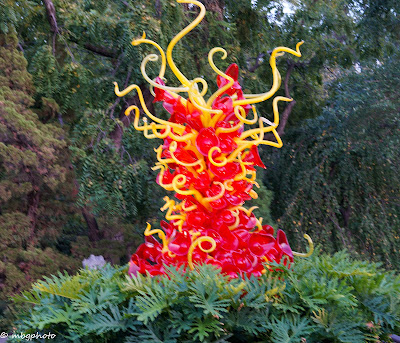 |
| Chihuly Tower in Daylight |
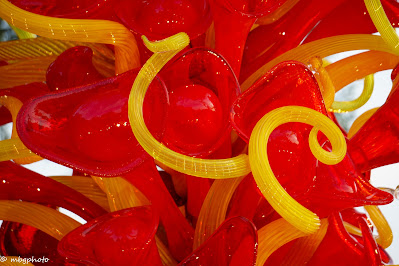 |
| Closeup of Chihuly Tower |
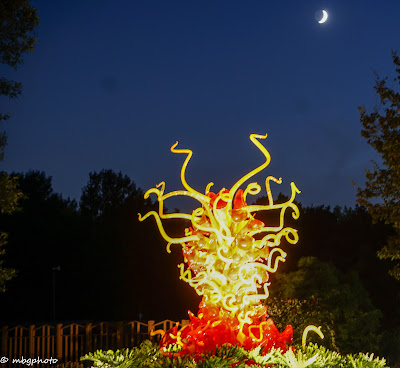 |
| Chihuly Tower at Night |
The next photo was taken at night in the lake by the Japanese garden.
 |
| Boat with Chihuly Art in Reflecting Pool |
 |
| Turquoise Martins in Chinese Garden |
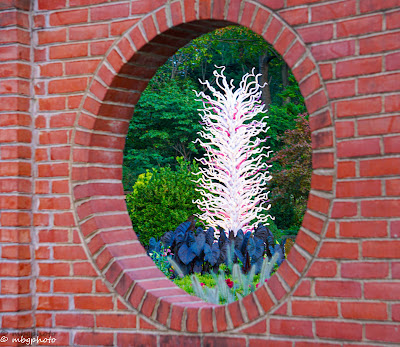 |
| White Tower in Blanke Boxwood Garden |
Water Lilies in the Garden
 |
| Lavender Water Lily and Reflection |
 |
| Water Lily |
 |
| Reflecting Pool |
 |
| Stunning Purple Water Lily |
I hope you have enjoyed this brief review of the Missouri Botanical Garden and if you visit the area I hope you will be able to enjoy the Garden.
Origami in the Garden
Thursday, September 28, 2023
Visit Missouri-Review of Faust Park
 |
| Butterfly House There are many interesting parks in the St. Louis metro area and I enjoy visiting them. On a beautiful September morning I toured parts of Faust Park with a photography group that I mentor. Faust Park is located in Chesterfield, Missouri which is in St. Louis County. On this visit we spent our time in the historical village, but on other occasions I have visited some of the many features of the park. It is complete with a playground, picnic areas, walking paths, a lake and so much more. In this post I will give you some of the highlights of the park and share my photos with you. History of Faust ParkThe land that is now Faust Park was originally owned by Frederick Bates who was the 2nd governor of the state of Missouri. In 1819 Bates built an estate on the property and called it Thornhill. That building still stands and is open for the public to see what life was like in the 1800 and 1900's. In 1968 Leicester Busch Faust acquired 100 acres of the land and opened it to the public as a park. By 1995 the park area had doubled in size. St. Louis CarouselThe St. Louis Carousel was built in the 1920's and for years it delighted visitors to the Forest Park area. It was in an amusement park called the Highlands. In 1963 when there was a fire at the Highlands forcing it to close, the carousel was moved to Faust Park. Today it is housed in a building at Faust Park and is a delight for kids of all ages. I have taken all four of my granddaughters there at different times and they always enjoyed riding the majestic horses. Sophia M. Sachs Butterfly HouseIn 1998 the Butterfly House opened in Faust Park. This beautiful building, which is pictured at the beginning of this post, houses a wonderful collection of butterflies. I worked for several years as a volunteer at the house and I was able to guide the public as they toured the Butterfly House. I learned a lot about butterflies and various insects and enjoyed photographing the butterflies. Here is a link to some of my photos and an article on photographing butterflies. Historic VillageThe historic village at Faust Park consists of a collection of nineteenth century St. Louis County homes and buildings. They all were in danger of being demolished and were rescued and moved to the village at Faust Park by the St. Louis County Parks Department. The buildings date from about 1840 to 1900. You can read more information about the village at Faust Park Historic Village There was not a formal tour going on the day we visited so we wandered through the village taking photos and enjoying the historic buildings. As we approached one of the houses a worker for the parks department offered to give our group a tour of that home. It was the Davis House, and we were able to go inside on the main floor where she gave us a bit of information about the house. Here is a photo I took of the outside and one of the front parlor. Below you will see a photo I took of the 1800's General Store. There were several other homes in the village. Here are three of them. You will note that each is a completely different style from the others. |
Most Recent Reviews on Review This Reviews
Search for Reviews by Subject, Author or Title
The Review This Reviews Contributors
 Sylvestermouse
Sylvestermouse Dawn Rae B
Dawn Rae B MbgPhoto
MbgPhoto Brite-Ideas
Brite-Ideas Wednesday Elf
Wednesday Elf Olivia Morris
Olivia Morris Treasures by Brenda
Treasures by Brenda The Savvy Age
The Savvy Age Margaret Schindel
Margaret Schindel Raintree Annie
Raintree Annie Lou16
Lou16 Sam Monaco
Sam Monaco
 Cheryl Paton
Cheryl Paton Renaissance Woman
Renaissance Woman BarbRad
BarbRad Bev Owens
Bev Owens BuckHawk
BuckHawk Decorating for Events
Decorating for Events Heather426
Heather426 Coletta Teske
Coletta Teske MissMerFaery
MissMerFaery Mickie_G
Mickie_G
Review This Reviews is Dedicated to the Memory of Our Beloved Friend and Fellow Contributor
We may be apart, but
You Are Not Forgotten























.JPG)




